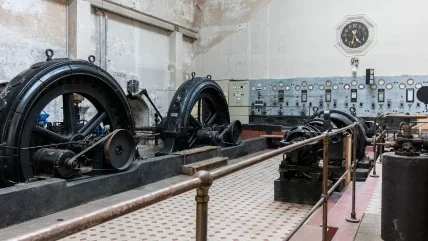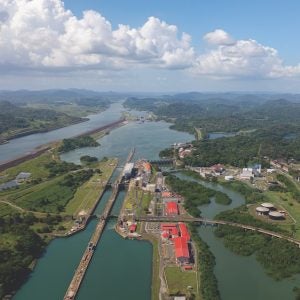
Rye Development is a developer of new low impact hydro-powered energy generation and energy storage in the US. With a pipeline of 25 projects across the US, Rye is committed to the responsible development of untapped hydropower resources while maintaining balance of the rivers’ environmental and commercial requirements, says the company’s CEO Paul Jacob. Through responsible energy development, Rye brings communities around the country substantial infrastructure, job creation, and a local source of renewable, non-consumptive energy.
Back in October 2022, it was announced that the company is moving forward with the next phase of its Montgomery Lock & Dam, Emsworth Lock & Dam, and Allegheny Lock and Dam #2 projects in partnership with The U.S. Army Corps of Engineers Pittsburgh District (USACE) – projects that will see hydropower added to existing locks and dam structures. Below, Paul Jacob shares details on the projects and future plans for the company.
When was Rye Development established and why?
Rye Development was founded in 2014, originally focused on new hydropower development on existing non-powered dams. This work has evolved to focus on developing and commercializing both run-of-river and pumped storage projects that produce clean, renewable, and 24/7 energy.
Rye Development is committed to advancing projects that help to achieve decarbonization of the electric grid. We recognize the role that US hydropower plays as an important renewable energy and an energy storage resource, and we’re committed to facilitating hydropower’s role in a clean energy future.
Can you provide details on the Pittsburgh projects?
Southwestern Pennsylvania is uniquely positioned to play a critical role in the clean energy future – leveraging its historic infrastructure and harnessing the power of its abundant waterways to lead in the development of low impact, renewable, hydropower. There are currently 10 projects in the region – representing a roughly $1 billion investment. Nearly a decade of Federal and State permitting and project development are culminating in the construction of three projects – breaking ground in early 2024.
The Montgomery Project, located on the Ohio River in Beaver County, is the largest planned project in the region as a 20 MW hydropower facility. In addition to providing renewable energy, the Project includes investment in new recreational fishing facilities and a walkway leading from a parking area with designated parking spaces to the fishing platform. The Project will also generate around 200 family-wage jobs during construction and invest over $75 million in improving the long-term viability of the dam itself, ensuring decades of renewable energy generation, recreational access and investment in Beaver County.
The Allegheny Lock & Dam 2 Project, located next to the Highland Park Bridge in the City of Pittsburgh, is a highly visible landmark to most southwestern PA and Pittsburgh natives. The facility was originally opened for navigation in 1934 and continues to support these activities today. In 2018 the University of Pittsburgh signed a landmark power purchase agreement with Rye Development to take all the output from the Allegheny Project. This effort directly supports Pitt’s dual commitment to sustainability and community investment. When complete, the facility will house a learning lab for Pitt students to better understand the operations, design, maintenance, and renewable energy infrastructure that these long-lived assets can play in the decarbonization of the electric grid.
The Emsworth Lock & Dam Project is located on the main channel of the Ohio River, just downstream from downtown Pittsburgh. The facility was originally opened for operation in 1921. Allegheny County has entered into a power purchase agreement with Rye Development to purchase the majority of renewable electricity from the Project. When operational, the Project will cover over 90% of the county’s annual electricity load.
Additional information on near term projects can be found at: https://pittsburghhydro.com/projects.html
How were the projects identified and why were these ones in particular selected?
If you think about what is needed for these projects, the Pittsburgh region has it all. First, you need existing dams that are well-maintained and not going anywhere. You also need a significant amount of water, which the region has. Finally, you need good partners and local support. The USACE, Allegheny County, University of Pittsburgh and many other local elected officials, businesses, and nonprofits have been supportive of this development in the region.
What stage is development at?
The cluster of projects in the Pittsburgh region are late-stage hydropower developments. All projects have received their federal 50-year construction and operations licenses and are moving through various stages of design. These projects are all on existing US Army Corps of Engineers (USACE) structures; Rye is working closely with the Pittsburgh District USACE office to deliver the projects.
What benefits are there to developing projects at existing sites?
Currently in the US, there are roughly 90,000 dams. Only about 3% of these structures are used to generate power. Across much of the mid-Atlantic and Northeast, dams were constructed decades ago for navigation and flood control. These infrastructure assets are in a new moment in their long history – serving as a cost-competitive renewable energy backbone for the future decarbonized grid. Pennsylvania and the Pittsburgh region are at the forefront of the new low-impact hydropower movement across the country.
As the US moves toward a fully decarbonized electric grid, there is a growing need to utilize all carbon-free assets available. The decarbonization of the grid will look different, based on geographic and resource advantages. Pennsylvania, one of the largest electric-generating states in the U.S., has a unique opportunity to leverage all the resources at its disposal to lead the country in a truly diversified approach to deep decarbonization.
Are there any special procedures to working within US Army Corps sites?
Yes – Rye has to submit and go through what is called a “408 Process.” The 408 is an administrative USACE approval through which the USACE provides review and approves design of the facilities at critical points in engineering. Rye anticipates the 408 processes on multiple sites kicking off in 2023 with the USACE Pittsburgh District office.
Do you select local labour at the sites? And offer any benefits to local communities?
Each project will invest roughly $100 million and employ 150-200 trades people over a roughly 36-month construction timeline. Rye will work with local labor to fill these family-wage jobs.
What other projects are in the pipeline?
Rye has a pipeline of 15 additional run of river hydropower projects in the mid-Atlantic and southeastern U.S.
Additionally, Rye is a leading private developer of pumped-storage hydropower in the US. Pumped storage facilities are the most common form of energy storage in the US, representing 93% of all utility-scale storage, according to the US Dept. of Energy. Pumped storage is a proven, available technology that can help reduce greenhouse gas emissions and dependence on fossil fuels.
Without a massive amount of additional storage capacity, we can’t bring more renewable resources onto the power grid, which is needed to meet aggressive climate goals.
What barriers have you come across when it comes to hydropower development?
Hydropower requires long-lead times – given that it is a federally-permitted process. This process provides benefits but also presents challenges in getting new hydropower facilities constructed. A number of other barriers also exist; however Rye is confident that when sited appropriately, new low-impact hydropower generational and storage plays an absolutely critical role in the clean energy transition.






